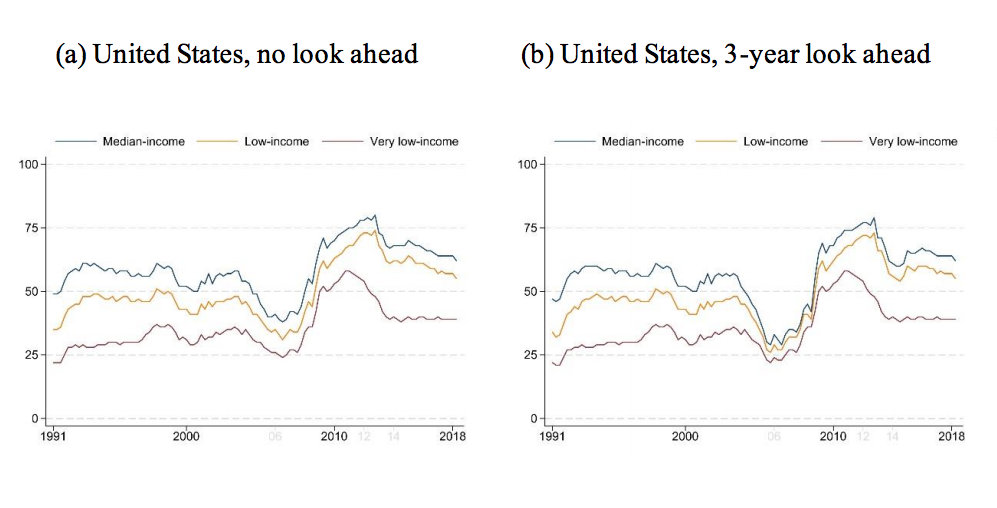In a newly released working paper, staffers at the Federal Housing Finance Agency debuted a new housing affordability metric that builds upon the data already provided by other similar metrics. And what the data reveals on the metric’s maiden voyage isn’t pretty.
In the working paper detailing the new measure, the authors lays out how the new Housing Affordability Estimates improve upon established housing affordability indices like National Association of Realtors’ Housing Affordability Index.
According to the paper, the new index increases accuracy by including a detailed breakdown of affordability by income-level; the use of real data on income, debt and funds available for down payments; and the incorporation of a future looking component that factors in things that impact affordability after origination like changes to property taxes and insurance all of which yield an index with more granular insight on the state of national affordability.
The charts below detail affordability by income class with respect to a) affordability at the time of origination and b) affordability in the three-year period after origination.
(Click to enlarge; Courtesy of FHFA)
This increased accuracy led to the unfortunate discovery that housing affordability drastically differs by what income-class a household falls into.
The researchers found that median-income households can afford 62% of the nation’s housing stock while low-income households and very-low-income households can only afford 55% and 39% of the housing stock, respectively.
Over the last 12 years, affordability has more than doubled for median-income households by mid-2018, while affordability remained largely unchanged for low- and very-low-income households. This, the study’s authors say, is confirmation of the percolating fear posited in the media that there has been a growing inequity in affordability for certain groups of households.
The authors declined to surmise as to why these inequities exist, saying that they will leave that discovery up to future research.
In the conclusion of the study, the FHFA says the views in the paper belong to the authors’ alone and are meant to stimulate discussion rather than act as an official position from the organization.






